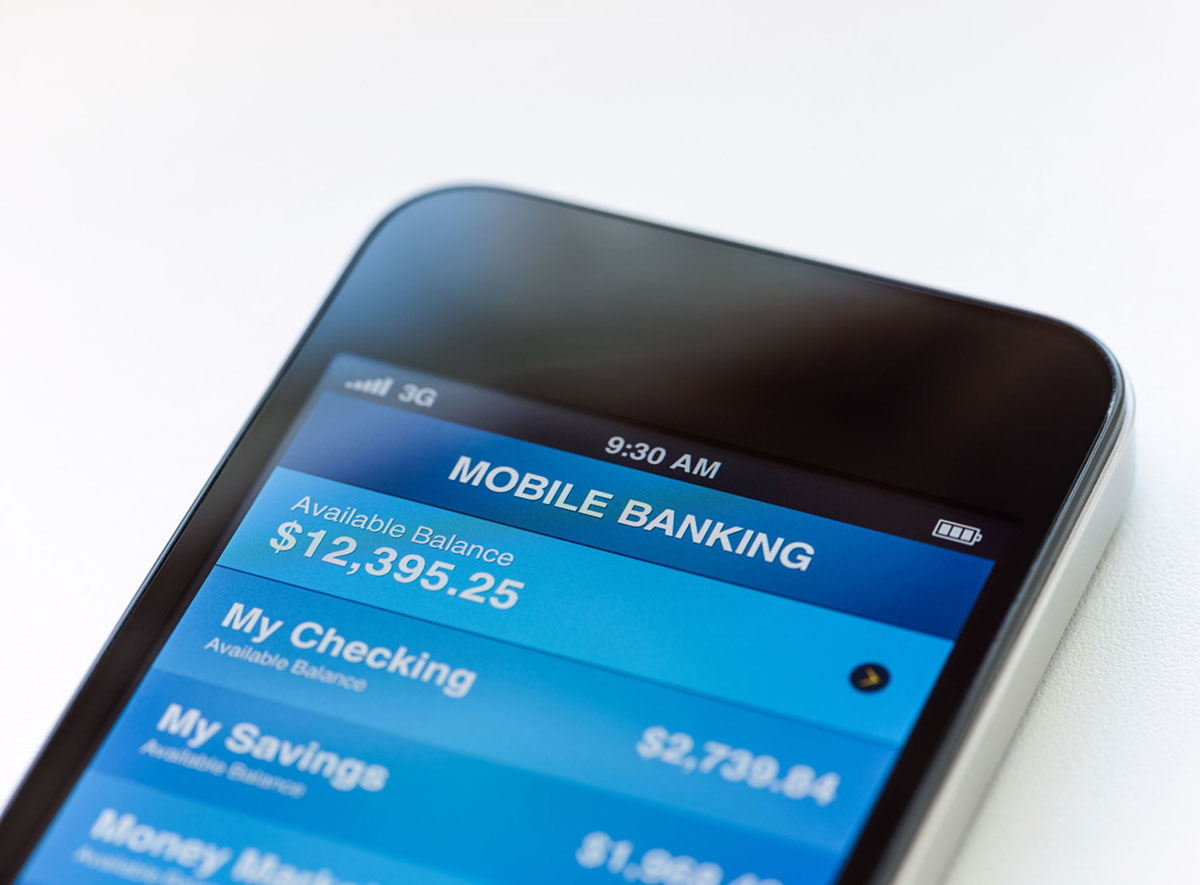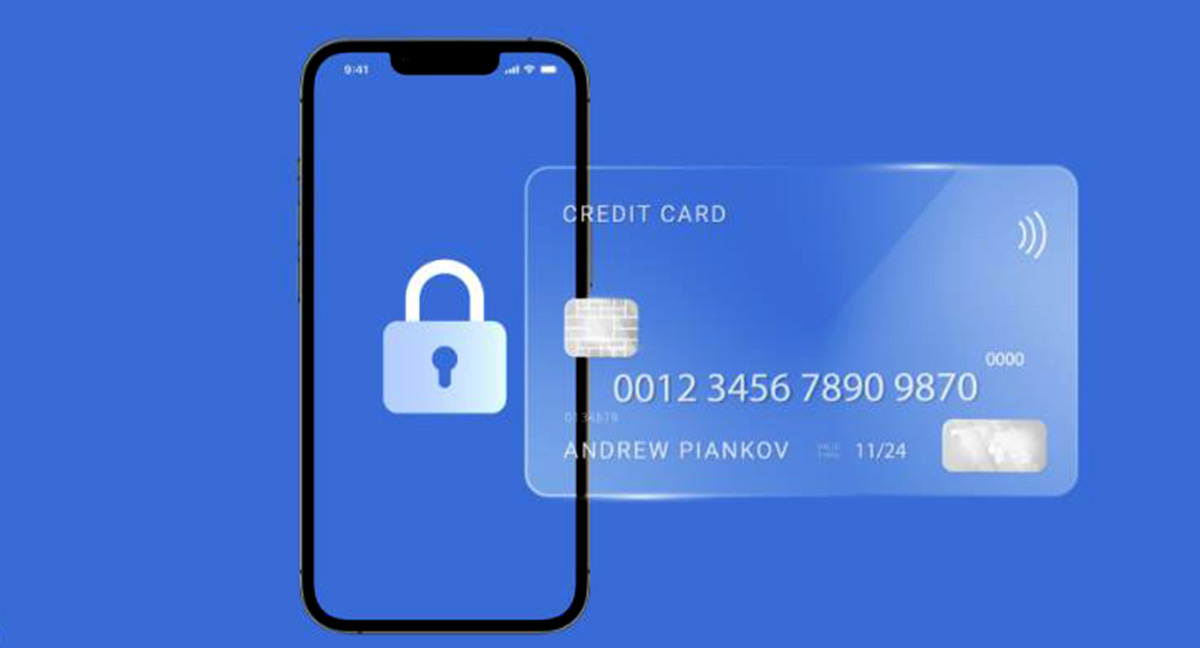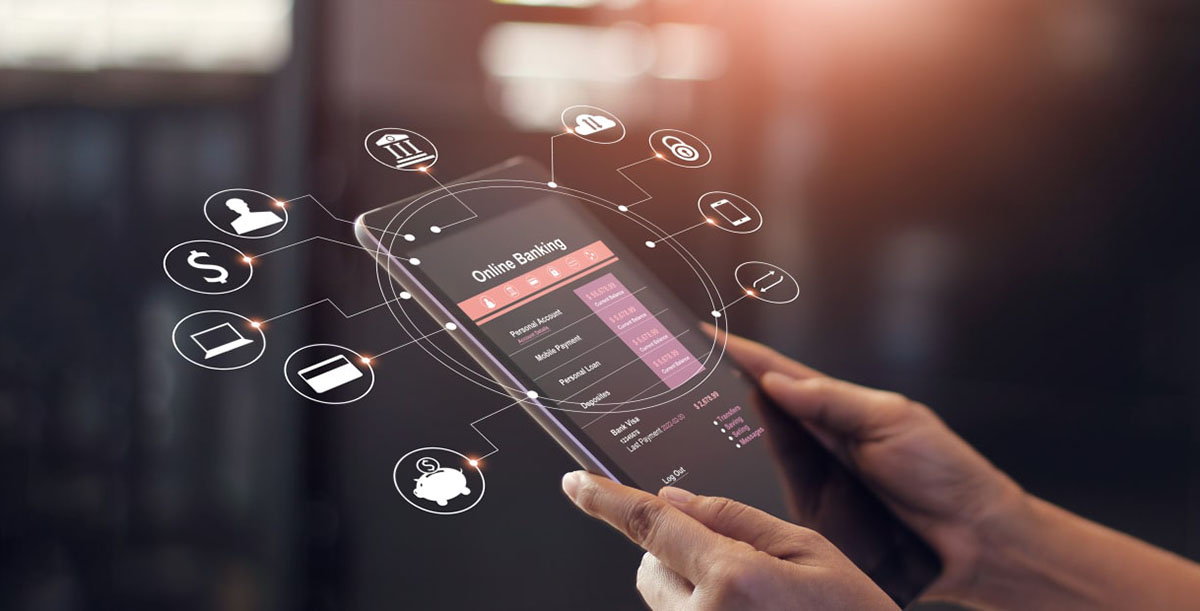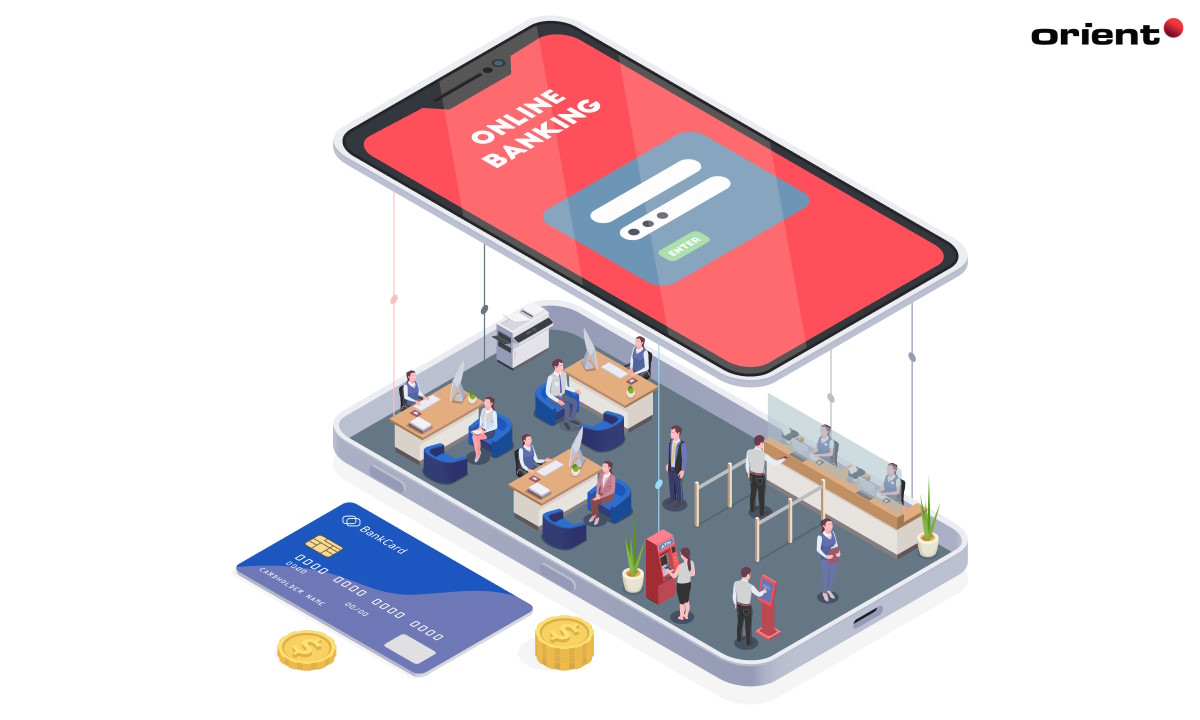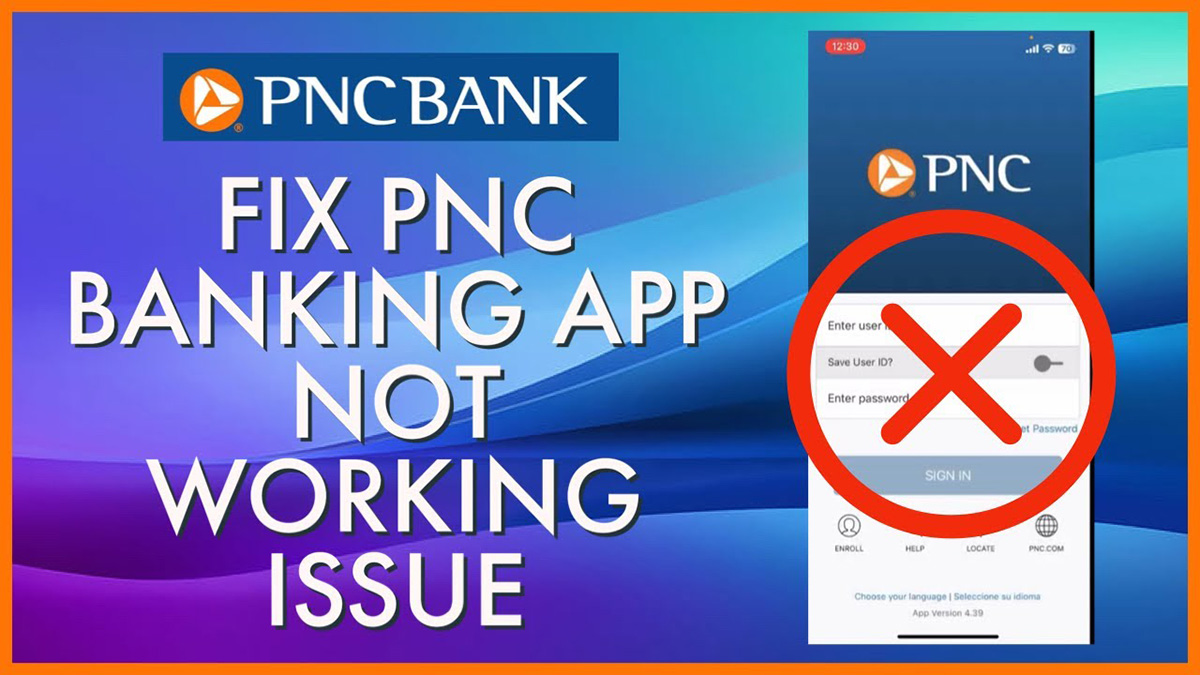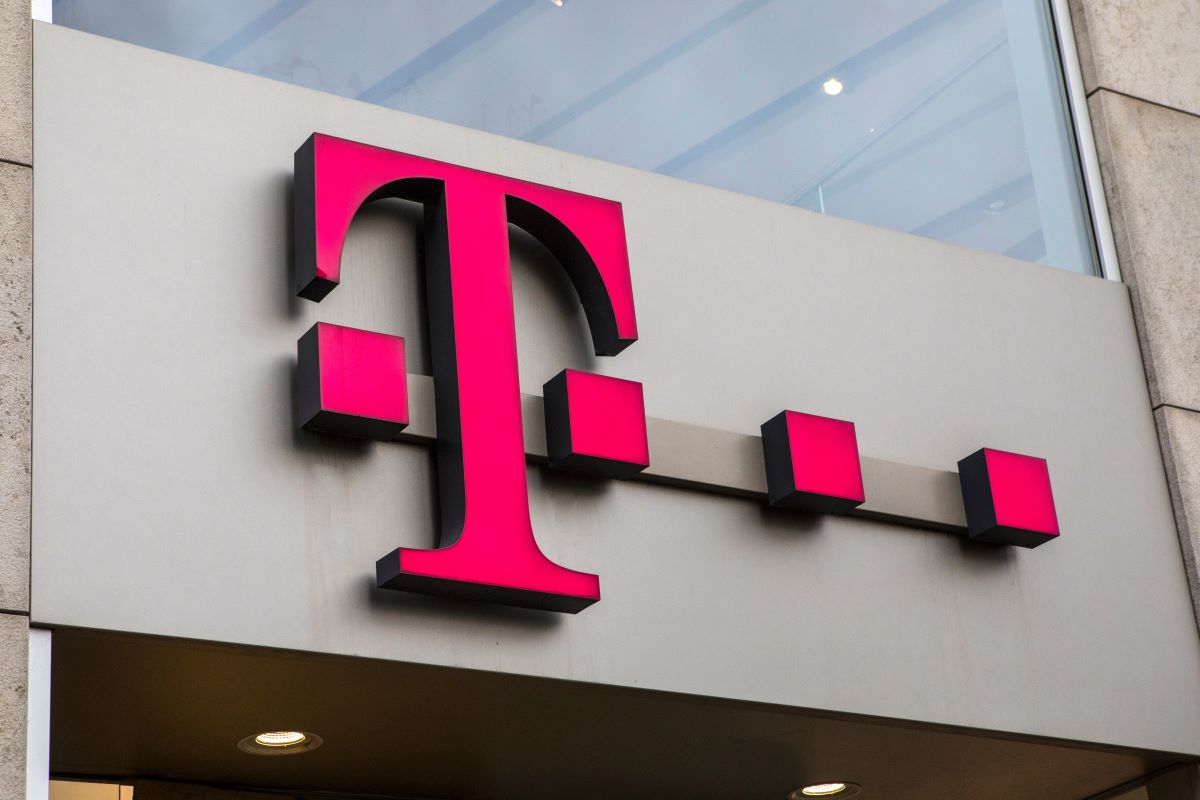Home>Finance>Why Is Mobile Banking Considered Riskier Than Online Banking
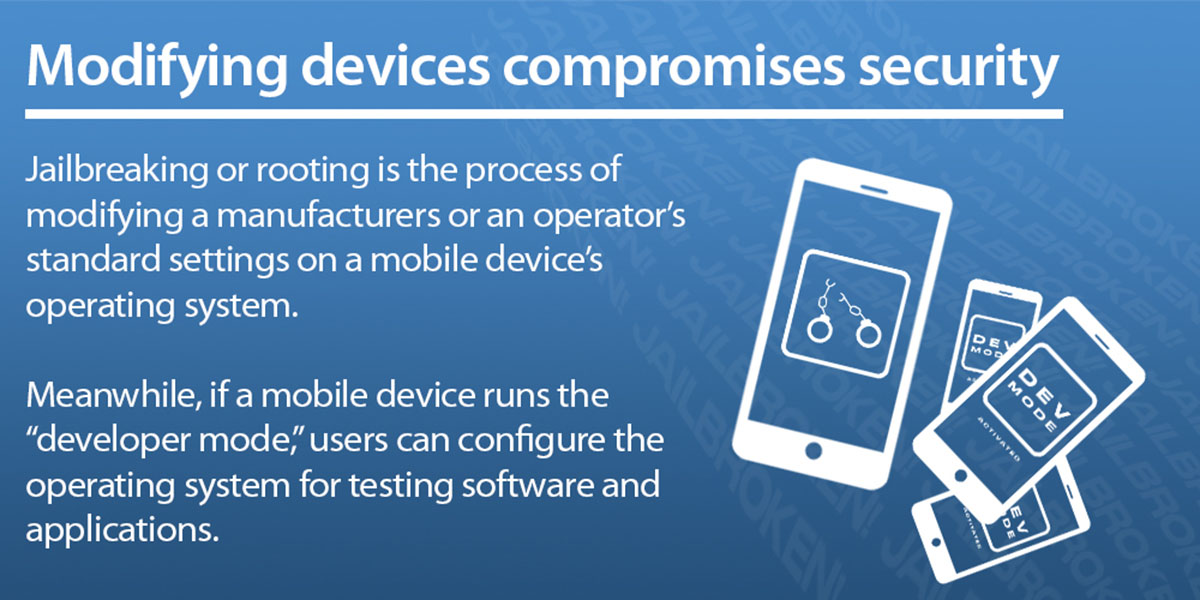

Finance
Why Is Mobile Banking Considered Riskier Than Online Banking
Modified: December 30, 2023
Discover why mobile banking is perceived as riskier than online banking and how it affects your financial security. Enhance your knowledge about finance and make informed decisions.
(Many of the links in this article redirect to a specific reviewed product. Your purchase of these products through affiliate links helps to generate commission for LiveWell, at no extra cost. Learn more)
Table of Contents
- Introduction
- Differences between Mobile Banking and Online Banking
- Security Risks in Mobile Banking
- Lack of Secure Connection
- Device Vulnerabilities
- Phishing and Fraud Attacks
- Lost or Stolen Devices
- Advantages of Online Banking
- Encryption and Secure Connections
- Multi-factor Authentication
- Enhanced Fraud Protection
- Conclusion
Introduction
As technology continues to advance, so does the way we manage our finances. Traditional brick-and-mortar banking has taken a backseat to the convenience of online and mobile banking. With just a few taps on a smartphone or clicks on a computer, we can transfer funds, pay bills, and even apply for loans.
While online banking has become the norm for many people, the rise of mobile banking has brought with it new concerns about security. This begs the question: why is mobile banking considered riskier than online banking?
The primary reason behind this perception is the inherent vulnerabilities associated with mobile devices. Mobile phones are easily lost or stolen, and they tend to have weaker security compared to computers. Additionally, mobile apps may not have the same level of encryption and protection as their online counterparts.
However, it is important to note that mobile banking is not inherently riskier than online banking. Rather, the perceived risk stems from a combination of factors, including the uniqueness of mobile devices, user behavior, and the evolving nature of cyber threats.
In this article, we will explore the differences between mobile banking and online banking, delve into the security risks associated with mobile banking, and highlight the advantages of online banking.
Differences between Mobile Banking and Online Banking
Mobile banking and online banking both offer convenient ways to manage your finances, but there are some key differences between the two.
Mobile banking refers to the use of a mobile device, such as a smartphone or tablet, to access your bank account and perform financial transactions. On the other hand, online banking involves using a computer or laptop to access your bank account through a web browser.
One major difference is the level of accessibility. Mobile banking allows you to manage your finances on the go, giving you the freedom to check your account balance, transfer funds, and pay bills from anywhere at any time. Online banking, while still convenient, requires you to be at a computer or laptop to access your account.
Another difference lies in the user experience. Mobile banking apps are specifically designed for mobile devices, providing a more streamlined and user-friendly interface. Online banking websites, although optimized for easy navigation, may not offer the same level of optimization for smaller screens.
Security features also differ between mobile banking and online banking. Mobile banking apps often utilize biometric authentication, such as fingerprint or facial recognition, to enhance security. Online banking websites may rely on usernames and passwords, with the option for additional security measures like security questions or two-factor authentication.
It’s important to note that both mobile banking and online banking rely on secure connections and encryption to safeguard your financial information. However, due to the nature of mobile devices, there are certain security risks associated with mobile banking that we will explore in the next section.
Security Risks in Mobile Banking
While mobile banking offers convenience and flexibility, it also comes with certain security risks that users should be aware of. Understanding these risks can help you take necessary precautions to protect your financial information.
1. Lack of Secure Connection:
One of the main concerns with mobile banking is the potential for using unsecured Wi-Fi networks. Public Wi-Fi networks, such as those at coffee shops or airports, are often unencrypted, making it easier for hackers to intercept sensitive data. It is crucial to ensure that you are using a secure and trusted network when accessing your mobile banking app.
2. Device Vulnerabilities:
Mobile devices, especially smartphones, are susceptible to malware and viruses. Downloading apps from unofficial or untrusted sources can expose your device to malware that can compromise your banking information. It is important to only download banking apps from official app stores and keep your device’s operating system and apps up to date to minimize vulnerabilities.
3. Phishing and Fraud Attacks:
Mobile devices are often targeted by phishing attacks, where hackers attempt to trick users into revealing their personal information. These attacks can come in the form of text messages, emails, or even fake banking apps that mimic legitimate ones. Always be cautious of unsolicited messages and verify the authenticity of any requests for personal or financial information.
4. Lost or Stolen Devices:
The portability of mobile devices means that they can be easily lost or stolen. If your mobile device falls into the wrong hands, unauthorized access to your mobile banking app can lead to financial losses. It is crucial to set up strong passwords or biometric authentication methods on your device and enable remote tracking and wiping features to protect your data in case of loss or theft.
Although these risks exist, it is important to remember that mobile banking apps also employ several security measures to protect your information. The next section will explore the advantages of online banking, which can provide additional security features and peace of mind.
Lack of Secure Connection
One of the main security risks associated with mobile banking is the potential for using an insecure or unencrypted Wi-Fi network. Public Wi-Fi networks, such as those found in coffee shops, airports, or shopping malls, are often unsecured and can leave your sensitive data vulnerable to interception by hackers.
When you connect to a public Wi-Fi network, your device’s data is transmitted over the airwaves, making it easier for cybercriminals to capture your information. Hackers can use various techniques, such as sniffing or man-in-the-middle attacks, to intercept and view unencrypted data packets traveling between your device and the network.
Once a hacker gains access to your data, they can potentially steal your login credentials, financial information, or any other sensitive data you transmit while connected to the compromised network. This puts your mobile banking activities at risk, as hackers can use this data to gain unauthorized access to your accounts and carry out fraudulent activities.
To protect yourself from this security risk, it is essential to exercise caution when using public Wi-Fi networks for mobile banking. Consider the following tips:
- Use a Virtual Private Network (VPN): A VPN encrypts your internet traffic and creates a secure connection between your device and the websites you visit. By using a VPN while accessing your mobile banking app, you can ensure that your data is encrypted and protected from potential eavesdropping.
- Connect to Trusted Networks: Whenever possible, connect to secure and trusted Wi-Fi networks, such as your home or workplace network. These networks are less likely to be compromised and offer a higher level of security for your mobile banking transactions.
- Enable Secure Socket Layer (SSL): Make sure the mobile banking app you are using has SSL enabled. SSL, indicated by a padlock symbol in the app’s address bar, provides encryption for the data transmitted between your device and the bank’s servers, making it more difficult for hackers to intercept and decipher the information.
- Update Your Mobile Operating System and Apps: Regularly update your mobile device’s operating system and banking apps to ensure that you have the latest security patches and bug fixes. These updates often include security enhancements that can protect your device and data from potential threats.
By being mindful of the security risks associated with using unsecured Wi-Fi networks and taking proactive measures to protect your data, you can minimize the risk of falling victim to hackers while using mobile banking. Remember, it’s always better to prioritize your security and convenience rather than compromise your sensitive financial information.
Device Vulnerabilities
Mobile devices, such as smartphones and tablets, have become an integral part of our lives, enabling us to stay connected and access various applications, including mobile banking. However, these devices are not immune to vulnerabilities that can compromise the security of your mobile banking activities.
One major vulnerability is the risk of malware and viruses. Mobile devices can be susceptible to malicious software that can infiltrate your device and gain unauthorized access to your personal and financial information. Malware can be disguised as seemingly harmless apps or downloads from untrusted sources.
Cybercriminals can use malware to steal your login credentials, capture keyloggers to record your keystrokes, or even gain control over your device remotely. These compromising actions can lead to unauthorized access to your mobile banking app, resulting in potential financial losses or identity theft.
To mitigate the risk of device vulnerabilities while using mobile banking, follow these essential security practices:
- Download Apps from Official Sources: Stick to downloading mobile apps, including banking apps, from official app stores like the Apple App Store or Google Play Store. These platforms conduct thorough security checks to ensure the legitimacy and safety of the apps they host.
- Update Your Apps and Operating System: Regularly update your device’s operating system and installed apps to benefit from the latest security patches and bug fixes. App updates often include security enhancements that address identified vulnerabilities, reducing the risk of exploitation by malicious actors.
- Be Mindful of App Permissions: Before installing a mobile banking app, review the permissions it requests. Be cautious of apps that ask for excessive permissions that are not relevant to their functionality. Granting unnecessary permissions can expose your device and personal data to potential risks.
- Install Mobile Security Software: Consider using reputable mobile security apps that offer features such as malware detection and prevention, safe browsing, and anti-theft measures. These apps can provide an additional layer of protection against potential threats.
- Exercise Caution with Unfamiliar Links or Messages: Avoid clicking on suspicious links in emails, text messages, or social media posts, especially those claiming to be related to your mobile banking. These may be phishing attempts designed to trick you into revealing sensitive information.
By implementing these security practices, you can significantly reduce the vulnerability of your mobile device and protect your personal and financial information while using mobile banking.
Phishing and Fraud Attacks
Phishing and fraud attacks pose a significant risk to mobile banking users, as cybercriminals continue to develop increasingly sophisticated methods to trick individuals into disclosing their personal and financial information. These attacks can lead to unauthorized access to your mobile banking accounts and potential financial losses.
Phishing attacks typically involve sending deceptive emails, text messages, or even phone calls that appear to be from a legitimate source, such as your bank or a trusted organization. The aim is to trick you into revealing sensitive information, such as your login credentials, credit card details, or social security number.
Fraud attacks go a step further by creating fake mobile banking apps or websites that mimic legitimate ones. These fraudulent apps or websites are designed to steal your login credentials when you enter them, giving the attackers access to your accounts and the ability to carry out unauthorized transactions.
To protect yourself from phishing and fraud attacks while using mobile banking, it is important to follow these security measures:
- Be Vigilant of Suspicious Communications: Be cautious of unsolicited messages or calls that ask for your personal or financial information. Legitimate organizations will never ask you to provide such sensitive information through unsecured channels.
- Verify the Source: Double-check the sender’s email address, website URL, or phone number to ensure they are legitimate. Avoid clicking on links or opening attachments in messages from unknown or suspicious sources.
- Use Official Banking Apps: Download and use official banking apps from reputable sources, such as the Apple App Store or Google Play Store. Avoid using links or third-party app stores that may host fake or malicious banking apps.
- Keep Your Mobile Banking App Updated: Regularly update your mobile banking app to ensure that you have the latest version, as updates often include security enhancements to protect against emerging threats.
- Enable Two-Factor Authentication (2FA): Enable two-factor authentication, if available, for your mobile banking app. This adds an extra layer of security by requiring a second form of verification, such as a unique code sent to your mobile device, in addition to your username and password.
- Report Suspicious Activity: If you suspect that you have received a phishing or fraud attempt, report it to your bank and local authorities. They can provide guidance and take appropriate actions to prevent further harm.
Remember, maintaining a healthy level of skepticism and being cautious of any suspicious communications or requests is crucial for protecting your personal and financial information from phishing and fraud attacks.
Lost or Stolen Devices
One of the significant risks associated with mobile banking is the potential loss or theft of your device. Mobile devices, such as smartphones and tablets, are highly portable and can easily be misplaced or fall into the wrong hands. If your mobile device is lost or stolen, it can pose a severe threat to the security of your mobile banking activities.
If an unauthorized individual gains access to your mobile banking app, they can potentially access your financial information, conduct fraudulent transactions, or even compromise your identity. To minimize the risks associated with lost or stolen devices, consider the following security measures:
- Set Up Strong Authentication: Protect your mobile device by setting up strong authentication methods, such as a PIN, password, or biometric authentication (fingerprint or facial recognition). These measures add an additional layer of security and make it more difficult for unauthorized individuals to access your mobile banking app.
- Enable Remote Tracking and Wiping: Ensure that your mobile device has remote tracking and wiping capabilities enabled. In the event of loss or theft, you can use these features to locate your device or remotely erase all the data stored on it to prevent unauthorized access to your sensitive information.
- Notify Your Bank Immediately: If your mobile device is lost or stolen, contact your bank’s customer service immediately to report the incident. They can take appropriate measures to secure your accounts and prevent unauthorized access.
- Monitor Your Accounts Regularly: Stay vigilant by monitoring your bank accounts regularly for any suspicious or unauthorized transactions. If you notice any unusual activity, report it to your bank immediately.
- Regularly Back Up Your Data: Back up important data, including your banking app’s data, on a secure cloud or other trusted storage solutions. This way, even if your device is lost or stolen, you can restore your data on a new device without compromising your mobile banking information.
By implementing these security measures and taking prompt action in the event of a lost or stolen device, you can mitigate the risk of unauthorized access to your mobile banking app and protect your financial information from falling into the wrong hands.
Advantages of Online Banking
While mobile banking has gained popularity for its convenience, online banking remains a reliable and secure option for managing your finances. Online banking offers several advantages that provide added value and peace of mind for users.
1. Encryption and Secure Connections: Online banking websites typically use robust encryption protocols to ensure the security of your data. This encryption scrambles your information, making it unreadable to unauthorized individuals. Additionally, online banking sites utilize secure HTTPS connections, further protecting your data during transmission.
2. Multi-factor Authentication: Many online banking platforms incorporate multi-factor authentication (MFA) as an added layer of security. MFA requires users to provide two or more verification factors, such as a password, security questions, or a unique code sent to a registered device. This helps protect against unauthorized access, even if your login credentials are compromised.
3. Enhanced Fraud Protection: Online banking often includes advanced fraud detection systems that continuously monitor account activity for suspicious transactions. If any suspicious activity is detected, banks can promptly notify account holders, freeze transactions, and take necessary measures to prevent fraudulent activity.
4. Comprehensive Account Management: Online banking platforms offer a wide range of tools and features to manage your accounts efficiently. You can view your account balances, access transaction history, transfer funds between accounts, set up automatic bill payments, and even download account statements for financial management purposes.
5. 24/7 Access and Support: Online banking allows you to access your accounts and perform transactions anytime, anywhere, as long as you have an internet connection. Most banks also provide customer support services, including online chat or dedicated helplines, to assist users with any questions or concerns.
6. Easier Financial Planning: Online banking platforms often provide budgeting tools, spending analysis, and personal finance management features. These tools allow you to track and categorize your expenses, set financial goals, and gain insights into your spending patterns, facilitating better financial planning and decision-making.
7. Reduced Paperwork and Convenience: Online banking significantly reduces the need for paperwork, such as writing checks or visiting physical branches. You can initiate transactions, pay bills, and manage your accounts digitally, saving time and minimizing reliance on physical documents.
8. Quick and Secure Transfers: Online banking enables fast and secure fund transfers between your accounts or to other recipients. You can initiate transfers instantly, making it convenient for paying bills, sending money to friends or family, or managing business payments.
9. Access to Additional Services: Online banking often provides access to a range of additional financial services, such as applying for loans, opening new accounts, or investing in various financial products. These services can be accessed conveniently without the need to visit a physical branch.
Overall, online banking offers a secure, efficient, and flexible way to manage your finances. By leveraging the advantages of online banking, you can streamline your banking activities, enhance security, and gain greater control over your financial well-being.
Encryption and Secure Connections
One of the key advantages of online banking is the implementation of encryption and secure connections, which ensure the confidentiality and integrity of your sensitive financial information. Online banking platforms employ various security measures to protect your data from unauthorized access and cyber threats.
Encryption: Encryption is the process of encoding information so that it’s only accessible to authorized parties. In online banking, encryption scrambles your data, making it unreadable to anyone who intercepts it. Banks use advanced encryption algorithms, such as SSL (Secure Sockets Layer) and TLS (Transport Layer Security), to encrypt the connection between your device and their servers.
When you access your online banking account, your data is encrypted before it is transmitted over the internet. This means that even if someone were to intercept the data, they would not be able to decipher it without the appropriate decryption key.
Secure Connections: Online banking websites utilize secure HTTP connections, known as HTTPS. The “S” stands for “Secure,” indicating that the data exchange between your device and the banking server is encrypted and protected against interception.
HTTPS connections require the use of digital certificates, which establish the authenticity of the website and verify its identity. This prevents attackers from impersonating the bank’s website and helps users confirm that they are interacting with a legitimate and secure platform.
These encryption and secure connection measures provide several benefits:
- Data Confidentiality: Encryption ensures that your sensitive financial information, such as account numbers, passwords, and transaction details, remains confidential. Even if intercepted, the encrypted data is unreadable without the decryption key.
- Data Integrity: Secure connections prevent unauthorized modification or tampering of your data during transmission. It ensures that the information you receive from the bank’s servers has not been altered or tampered with en route.
- User Authentication: Encryption and secure connections facilitate the verification of the bank’s identity and prevent potential phishing attacks. When you see the padlock symbol or the “https://” prefix in the website address, it signifies that you are connected to the bank’s authenticated and verified platform.
- Protection against Man-in-the-Middle Attacks: Encryption and secure connections guard against man-in-the-middle attacks, where a malicious actor intercepts and alters communication between two parties. The encryption makes it difficult for attackers to read or modify the data being transmitted.
By utilizing encryption and secure connections, online banking platforms go above and beyond to protect your sensitive financial information. However, it is essential to ensure that you are accessing your online banking accounts through secure and trusted devices and networks to maintain the integrity of your online banking transactions.
Multi-factor Authentication
In the realm of online banking, security is paramount. That’s why many online banking platforms incorporate multi-factor authentication (MFA) as an additional layer of protection. While usernames and passwords are a common form of authentication, MFA adds an extra step to verify your identity and enhance security.
What is Multi-factor Authentication?
Multi-factor authentication requires users to provide two or more verification factors to access their online banking accounts. These factors typically fall into three categories:
- Something You Know: This includes information that only the user should know, such as a password, PIN, or answers to security questions.
- Something You Have: This factor involves possessing a physical item that verifies your identity, such as a mobile device, smart card, or security token that generates one-time passwords.
- Something You Are: This category involves biometric authentication, including fingerprints, voice recognition, facial or iris scans, or even behavioral traits like keystroke patterns.
Advantages of Multi-factor Authentication:
Multi-factor authentication provides several advantages in bolstering the security of online banking:
- Enhanced Security: By requiring multiple verification factors, MFA significantly reduces the vulnerability of your online banking account to unauthorized access. Even if someone discovers your password, they would still need the additional factor(s) to gain entry.
- Protection against Stolen Credentials: In the event that your username and password are compromised through a data breach or phishing attack, MFA acts as an additional defense. Without the secondary factor, attackers will be unable to access your account.
- Added Layer of Verification: MFA provides an extra layer of assurance that you are the authorized user. This deters cybercriminals who may have obtained your login credentials from successfully accessing your account, as they would need to bypass the additional verification step(s).
- Flexibility and Convenience: Multi-factor authentication methods vary in terms of convenience and availability. Some banks offer options like push notifications or SMS codes sent to your mobile device, while others utilize fingerprint or facial recognition technology. This allows you to choose a method that aligns with your preferences and comfort level.
Tips for Using Multi-factor Authentication:
- Ensure that you have set up multi-factor authentication for your online banking account.
- Choose strong and unique passwords for your account, as the first factor of authentication.
- Keep your mobile device or security token, the second factor, safe and secure.
- Regularly update your contact information in case your second factor involves communication via phone or email.
- Be cautious of phishing attempts that may try to trick you into providing your second-factor authentication code or disclosing personal information.
By implementing multi-factor authentication, online banking platforms elevate the security of user accounts and provide an additional layer of protection against unauthorized access. Embracing this security measure enhances the overall safety and trustworthiness of the online banking experience.
Enhanced Fraud Protection
One of the significant advantages of online banking is the implementation of enhanced fraud protection measures. Online banking platforms employ advanced technologies and strategies to detect and prevent fraudulent activities, helping to safeguard your financial information and transactions.
Fraud Detection Systems:
Online banking platforms utilize sophisticated fraud detection systems that continuously monitor customer account activity for any suspicious patterns or behavior. These systems use algorithms and predictive analytics to identify potential fraudulent transactions or unauthorized access attempts.
When the fraud detection system detects any suspicious activity, it triggers alerts to both the bank’s security team and the customer. This proactive monitoring helps prevent fraudulent transactions from occurring and ensures prompt action to protect the customer’s funds and account.
Transaction Verification:
Online banking platforms often employ additional layers of transaction verification to enhance security. This may involve sending verification codes or authentication requests to the customer’s registered mobile device or email address.
For example, if you attempt to make a large or unusual transaction, the online banking system may prompt you to enter a verification code sent to your mobile device. This verification step ensures that you have authorized the transaction, adding an extra layer of protection against unauthorized access to your account.
Real-time Fraud Monitoring:
Real-time monitoring is another vital aspect of enhanced fraud protection in online banking. It involves tracking transactions and account activity as they occur, allowing for immediate identification of any red flags or suspicious behavior.
Upon detecting any potentially fraudulent transactions, the bank can take immediate action to prevent further unauthorized transactions. This may include temporarily blocking the account, suspending certain transactions until they can be verified, or contacting the customer to confirm the legitimacy of the transactions.
Customer Education:
Online banking platforms play an important role in educating customers about potential fraud risks and prevention measures. They provide resources, educational materials, and security tips to help users understand the common types of fraud, such as phishing, identity theft, or account takeovers.
By educating customers about these risks and providing guidance on how to protect their personal and financial information, online banking platforms empower users to be more vigilant and make informed decisions when it comes to their online security.
Through the combination of advanced fraud detection systems, transaction verification methods, real-time monitoring, and customer education initiatives, online banking platforms deliver enhanced fraud protection, ensuring the safety and security of customer accounts and transactions.
Conclusion
Mobile banking and online banking both offer convenient ways to manage your finances, but it is important to understand the security risks and advantages associated with each. While mobile banking is often perceived as riskier than online banking, these risks can be mitigated by taking necessary precautions and being aware of potential vulnerabilities.
In the realm of mobile banking, the lack of secure connections and device vulnerabilities are key concerns. It is crucial to ensure that you connect to secure Wi-Fi networks and keep your mobile device updated with the latest security patches. Being cautious of phishing and fraud attacks is also essential to protect your personal and financial information.
However, online banking also offers significant advantages in terms of security. The encryption and secure connections employed by online banking platforms ensure the confidentiality and integrity of your sensitive information. Multi-factor authentication adds an extra layer of protection by requiring additional verification steps to access your accounts.
Additionally, online banking platforms utilize advanced fraud protection measures, such as fraud detection systems, real-time monitoring, and transaction verification. These measures help prevent and detect fraudulent activities, providing enhanced security for your financial transactions.
In conclusion, both mobile banking and online banking have their unique risks and advantages. By understanding these factors and implementing best security practices, such as using secure networks, updating devices, and utilizing multi-factor authentication, you can enjoy the convenience of digital banking while minimizing security risks.
Ultimately, maintaining a balance between convenience and security is essential. Choosing the banking method that aligns with your needs and comfort level, while prioritizing the security of your financial information, will enable you to make informed decisions and confidently manage your finances in the digital age.

